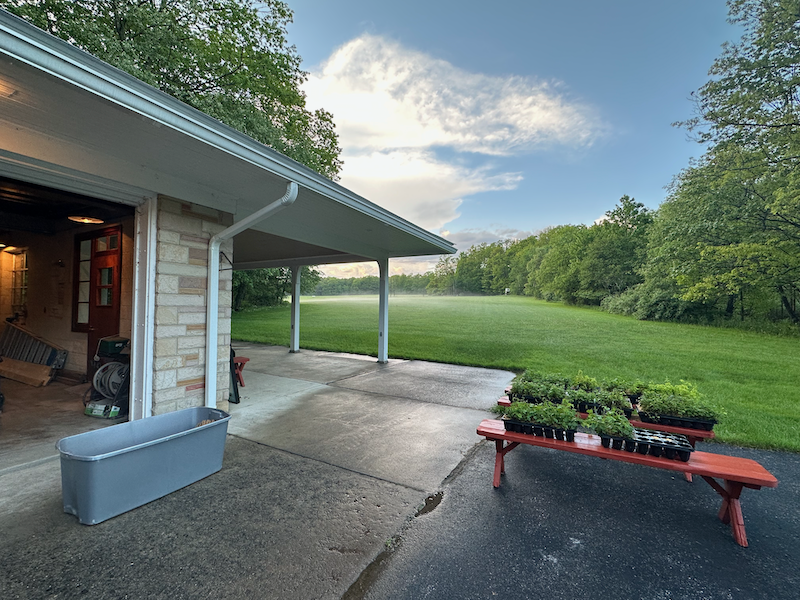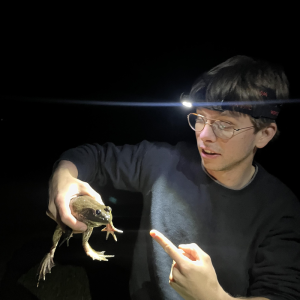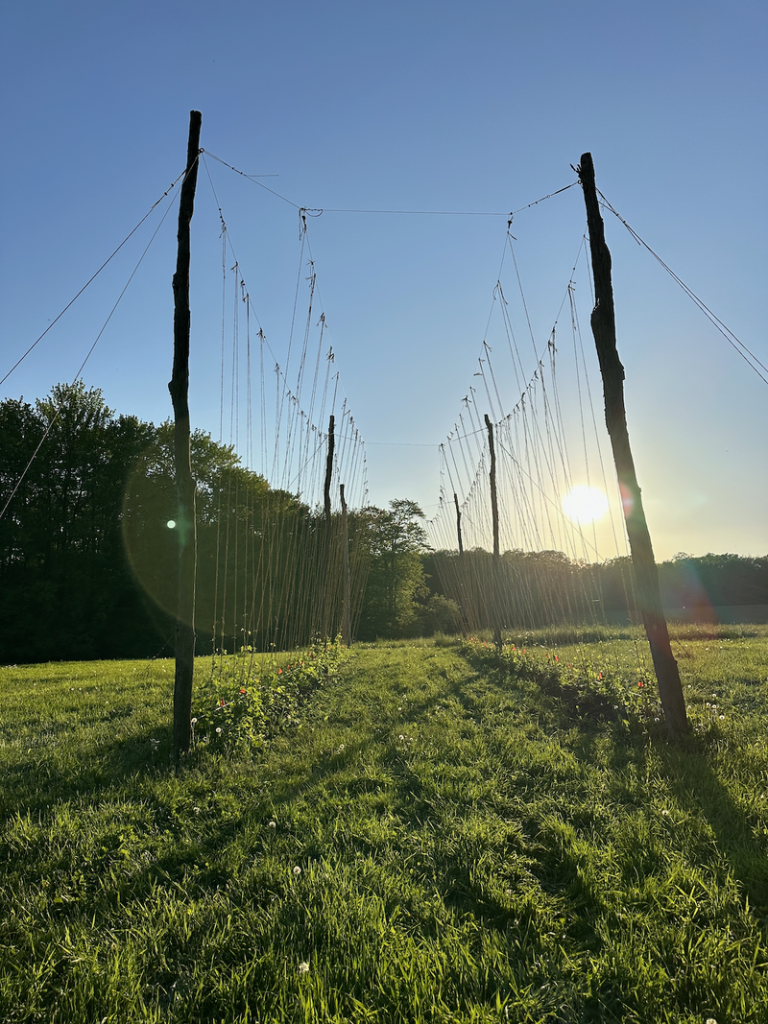A Certified Naturally Grown Farm - Saint Marys, Pennsylvania
A Family Hop Farm’s Love of Stringing The Hopyard
Posted on May 23, 2024 by Joshua
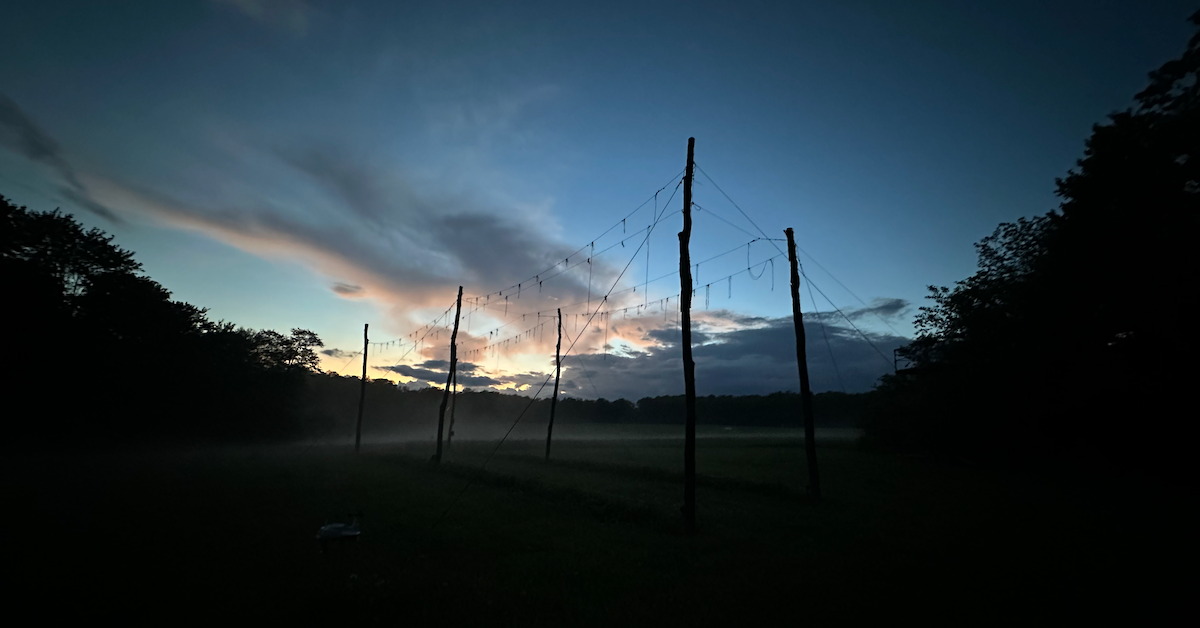
For hop Farmers in the Mid Atlantic, the middle of May means it’s time to string and train the hops! That’s where we found ourselves recently @HoffAppFarm. While exhausting, stringing the hopyard is something this family hop Farm loves.
We’re up in the “siege tower”, or in my case, strapped to the outside of it on an extension ladder. Hundreds of coir strings are waiting to be tied and punched into the ground. Then comes wrapping 2-4 bines around them clockwise to begin their journeys to the top of the trellis.
I drove up the night before, as these typically mean even earlier than usual starts. I’d leave the 2+ hour drive for the night before to get some things in place. This would then leave the morning exclusively for final prep. The Friday evening before did not disappoint with some incredible scenery!
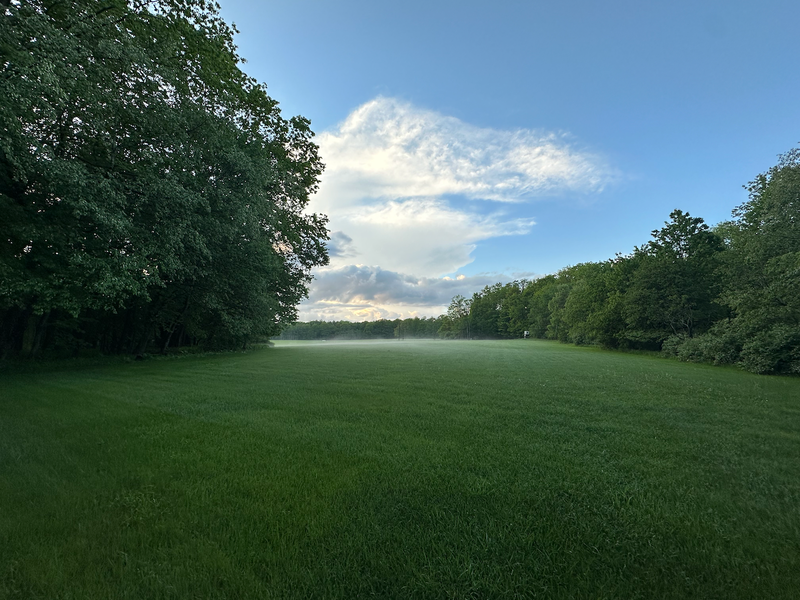
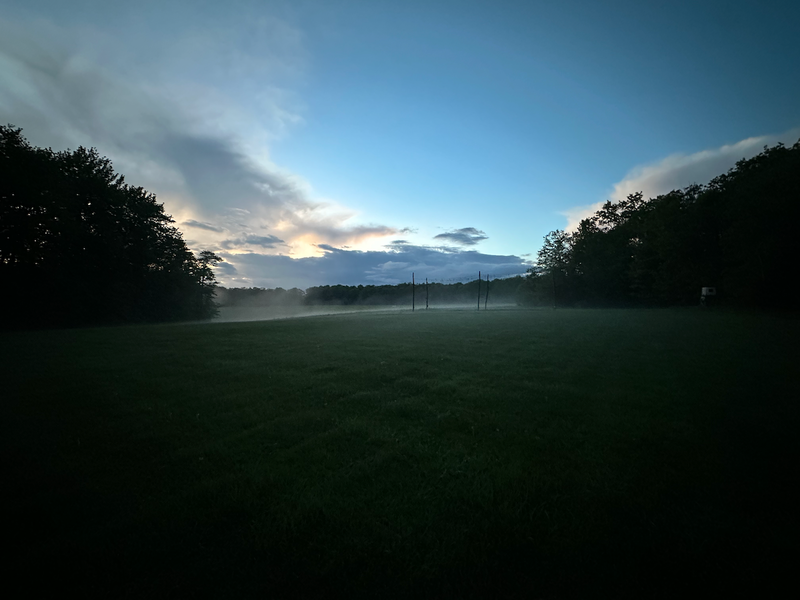
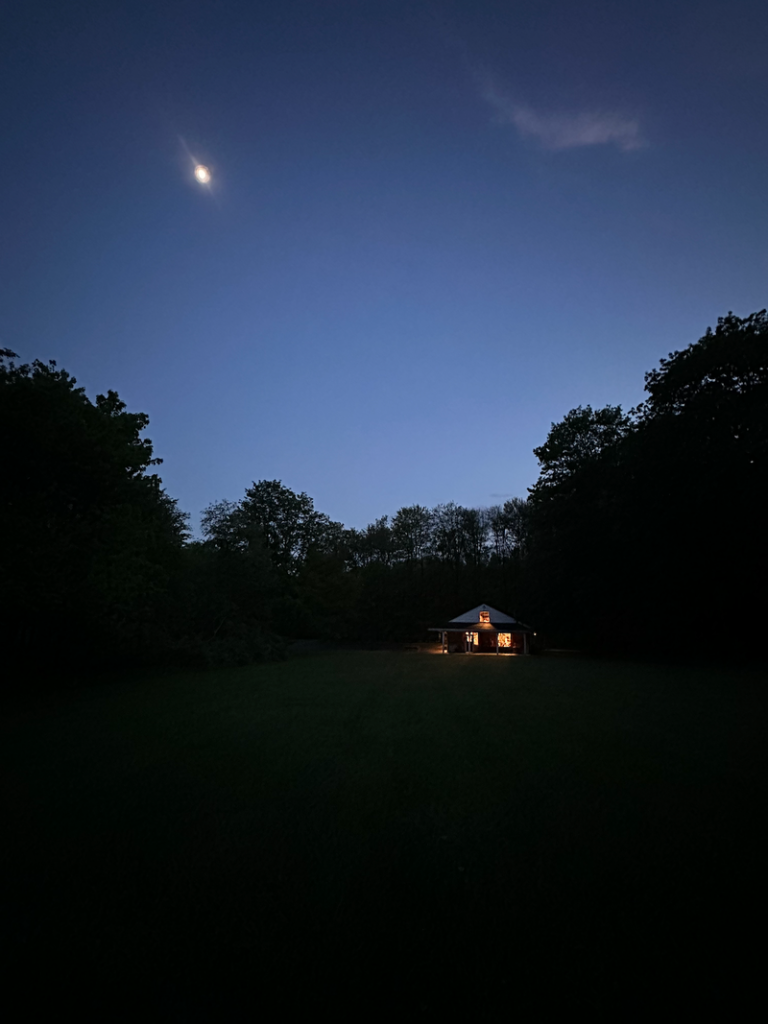
Saturday, In The Park (Hopyard)
Saturday morning started as usual with a healthy dose (if that’s possible) of coffee and a jelly donut. Not really on my typical breakfast list, but Mom snags them, and well…hard to pass them up 😉 Up to the barn to to start prepping things. The other reason to head up the day before – it’s a good practice to let the coir soak overnight. It’s much easier to work with as it’s more flexible.
The next step would be to assemble all the tools necessary for the day. This includes w-clips, coir punching rods, etc., fire up the tractor, prep the “siege tower” and rig the outer ladder. This year would be a little different in that I’d have some help with me up in the tower. Most years it’s just me in the tower and brother Mike or brother-in-law Bill on the IH674.
PSU Grad to the Rescue
Louis Franyo, or “Fin,” joined me. Fin is a recent Penn State engineering graduate. He was part of the PSU team that worked on designing a second oast to add to our toolset. The oast lets us dry down the hops for long-term storage.
Thanks to the efforts of our good friends at the Pennsylvania Technical Assistance Program (PennTAP) to secure the funding and the Learning Factory at Penn State’s College of Engineering, the team’s efforts yielded a different style oast that will increase our capacity and shorten the drying time. At our initial on-site visit, Fin mentioned an interest in helping out. During the season, stringing is one of those projects we typically seek outside help.
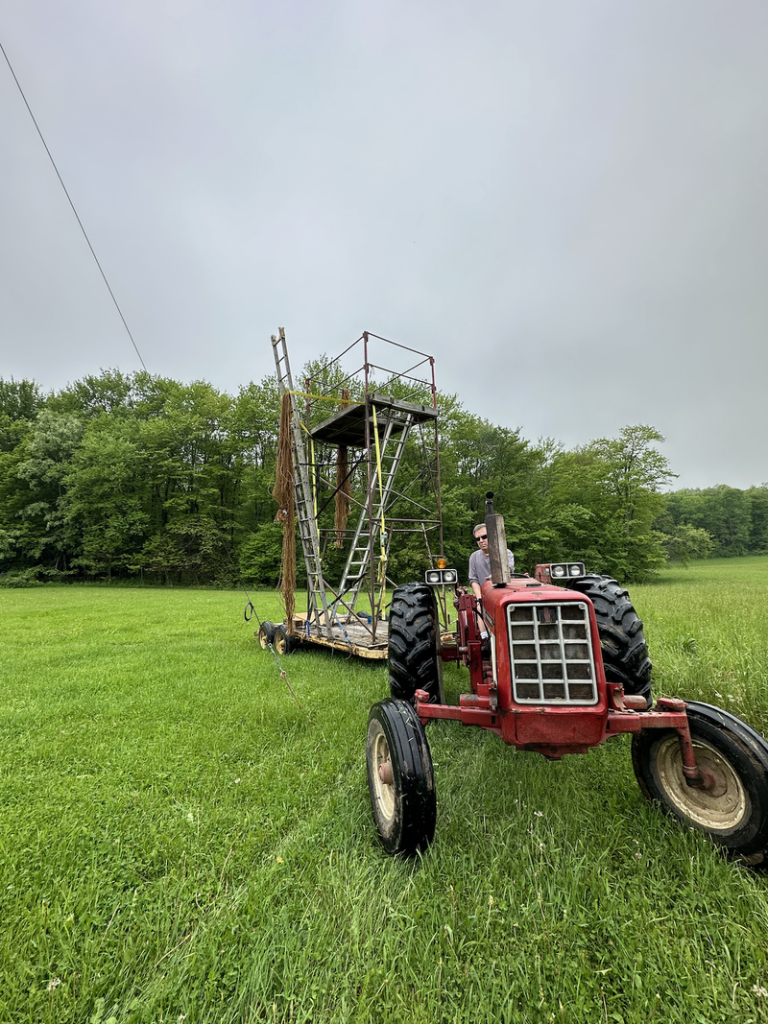
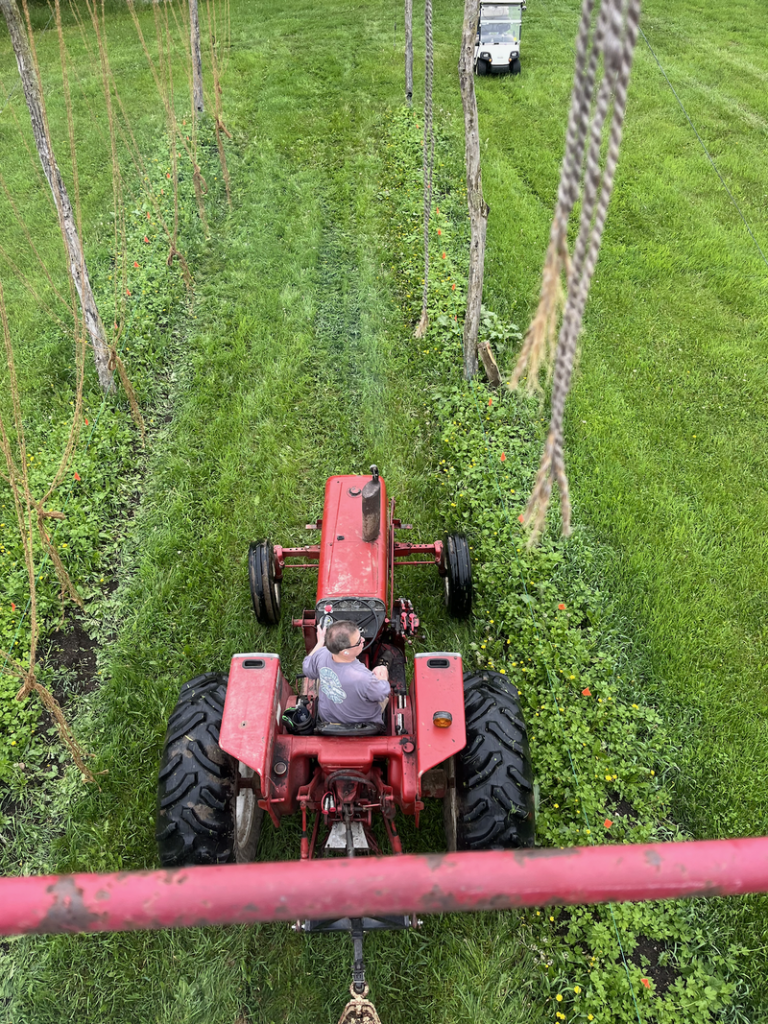
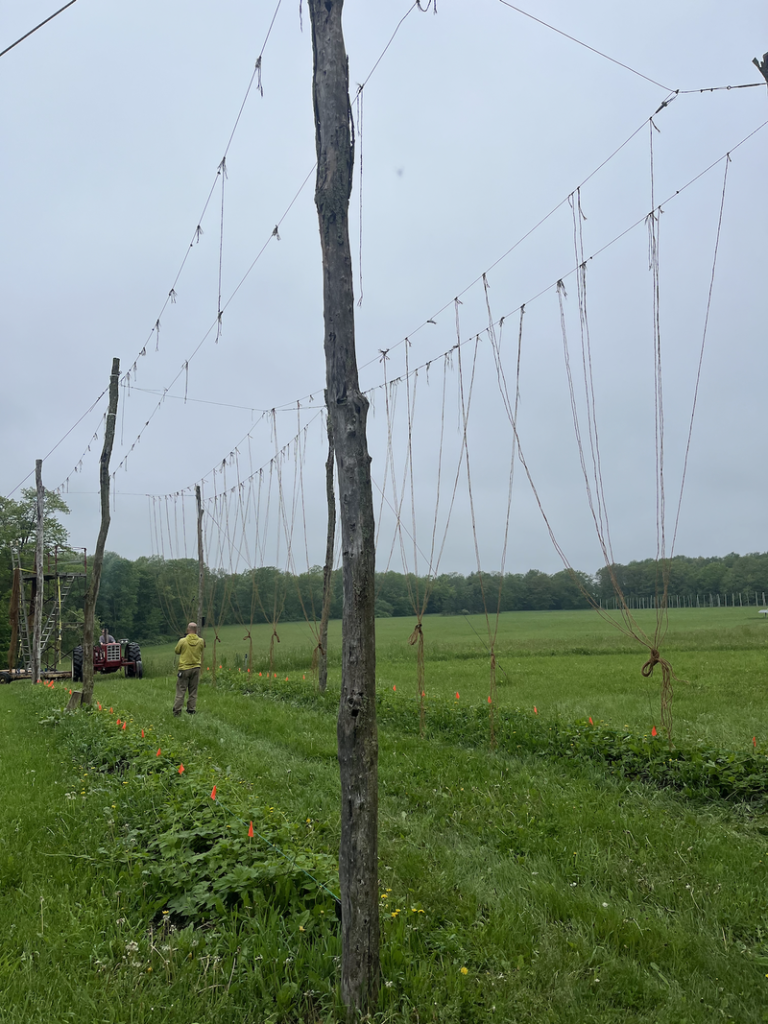
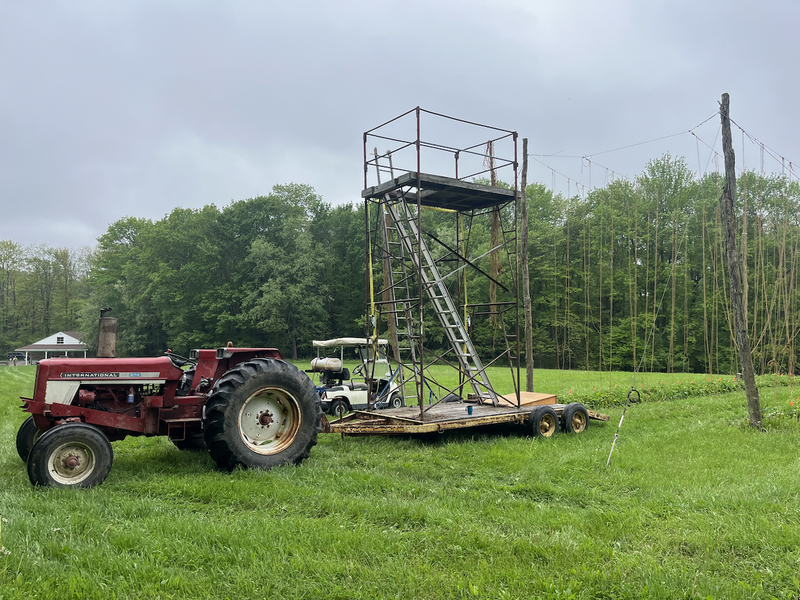
Make Due With What You Have
Now one thing about our original, smaller yard, we didn’t know completely what we were doing when laying it out. Yes, we spaced correctly with the rows 15′ apart. Yes, the hops rhizomes 3′ apart in the hills, but the cabling setup was almost comical. These are heavy duty wire rope and all the related hardware to go with them. We used a bucket truck to position me in place to string the upper cables some 20′ above the ground.
Wranglin’ Cables
While I’m no longer afraid of heights after many years of climbing, it’s not easy. It can be difficult trying to manipulate heavy cable, ratchets, in a very small bucket at that distance off the ground. Kudos to all the line-workers out there! Long story short, we originally wired the small yard to accommodate only 1 overhead wire per row. A second line is added in commercial yards to create what’s called a “V-trellis”. This is essentially another row to tie into, expanding the overall yield without increasing the footprint below. in 2018 or 2019, we added that second set of wires.
Well as it turns out, the anchor cables do not allow us to work from outside the rows. Rather, we have to do all our work from the main alley in-between them. That means the two outer cables on either respective side can difficult to reach while not driving the tractor’s tires over the hops below. So I came up with an idea to strap a ladder to the ouside of the rig to access those cables. What that also means however is I’m essentially dangling out in space on an extension ladder not leaning up against anything as they’re designed to be. It’s then held in multiple places with ratchet straps. I’ve adapted to it.
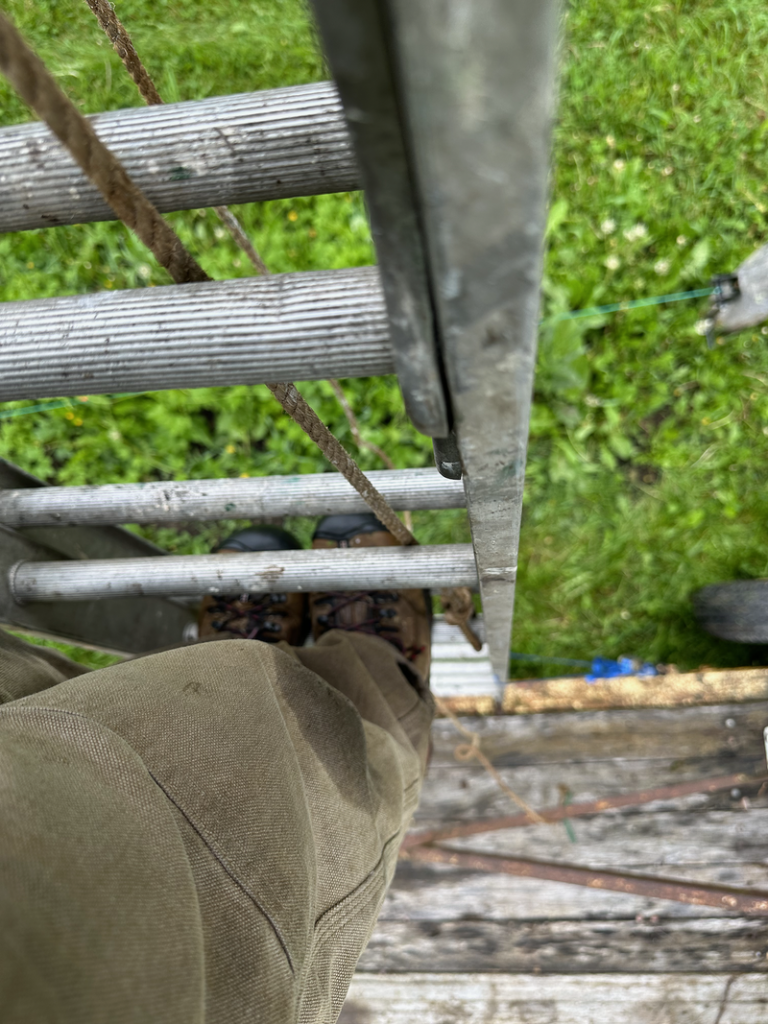
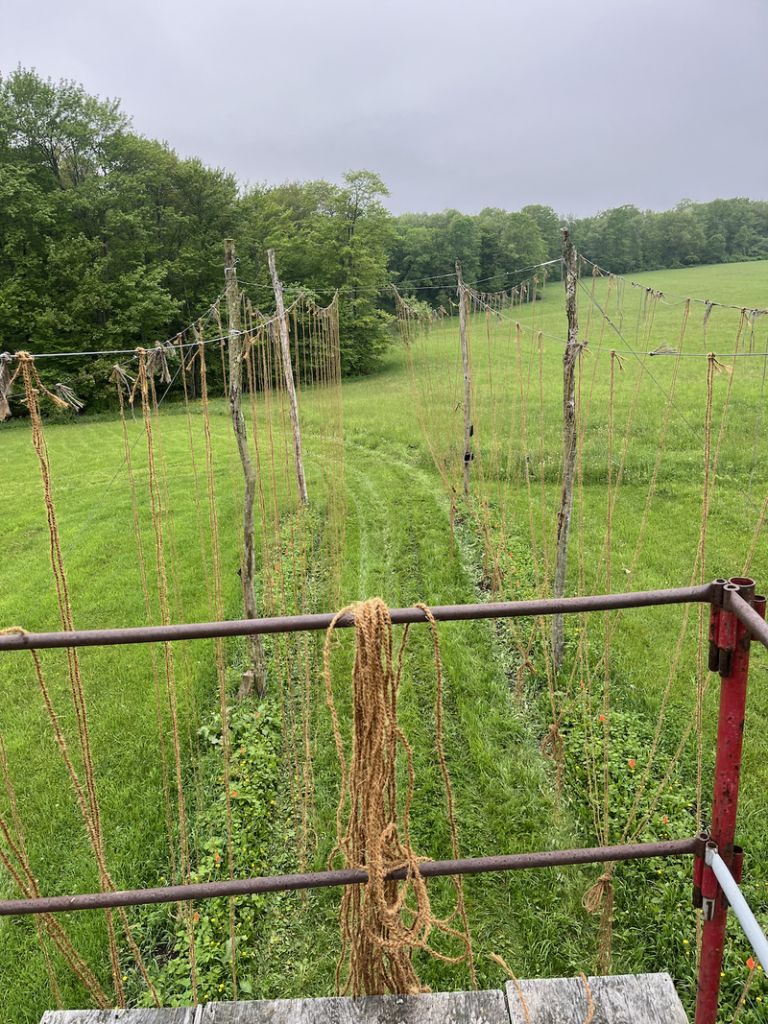
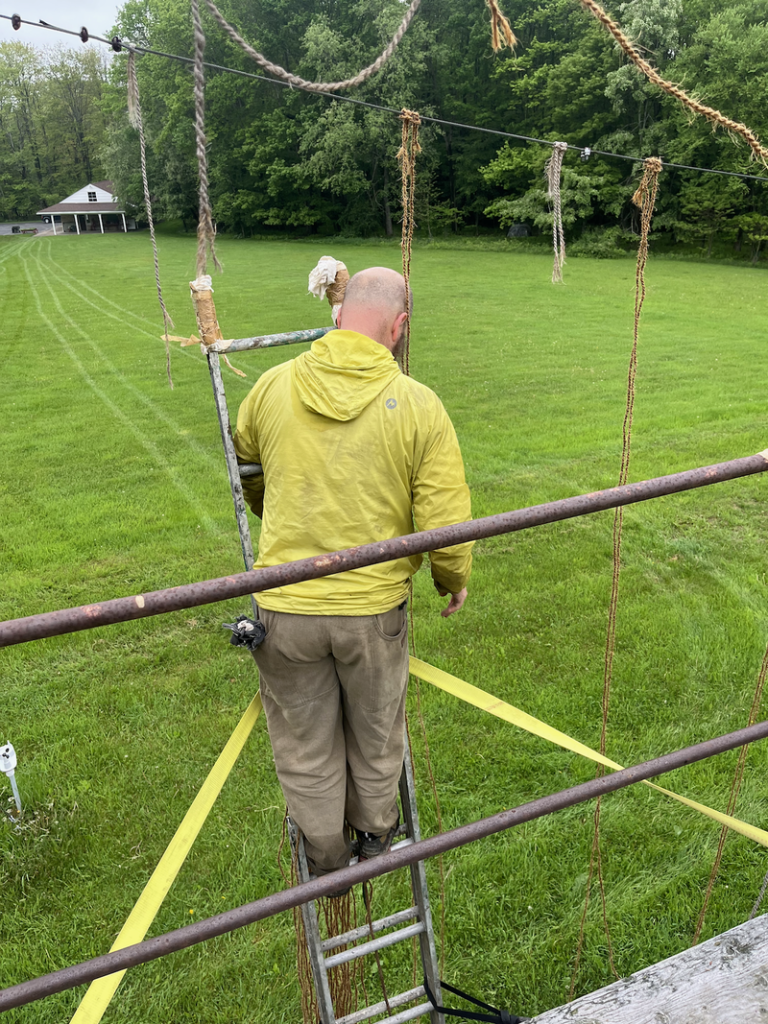
One Ladder? Why Not Two?!
And this year because of Fin’s stellar help, he could remain in the siege tower to string the two inner rows, while I simultaneously did the outer ones. We did have to make an up-and-back trip as we couldn’t have him string both inner rows, as for me to get to the other outside row, we’d have to come back and that coir in the alley would get in the way. The ideal solution would be to have two suckers…I mean helpers…secured on 2 outer ladders with 2 people in the tower and do it all on one pass. Maybe next year 😉
Next Up: Punch The Coir and Train The Hops
Once we got through both directions, it was time to park the tractor and the rig. Next we secure the coir with W-clips using the coir punching rod (I think it’s actually called an applicator rod but I like our term better). As mentioned, we use a V-trellis system so in the shape of (you guessed it!) a “V” we drop 2 lines down per plant from one cable, and then another 2 for another “V” to the plant from the other cable. As such, each plant has 4 pieces of coir boxed around it. It takes a little practice to get this process right, but I can do it in my sleep at this point.
Train ‘Dem Bines!
While Fin and Mike were punching in the coir, I trained the hops onto it. This also means simultaneously weeding, and then training 2-3 hop bines per piece of coir and wrapping them clockwise as they grow vertically following the direction of the sun above. Honestly, if you’re not taking advantage of a weeding opportunity at some point while doing any project in an organic hopyard, you’re probably doing something wrong 😉
Training hops, especially when you’re probably about 2 weeks behind schedule can be tricky, as they’re now over a foot long and they love to wrap themselves around any and everything they can find; each other, the drip irrigation support, the flags used to mark the center of each hop hill…anything! So part of the work is detangling them and then getting them on the right path up the coir. It’s easier when they’re a bit shorter, but due to some other issues we had to address earlier in May, this was our first chance to string.
“Kissed By The Hops”
Fin assisted with this process which was great as it’s usually been me the last few years. Hops have small hairs on them, like tomato plants, which give them their climbing prowess. As I’ve mentioned before, working with them so closely, you’re often “kissed by the hops” all over your forearms and hands as they’re a bit scratchy.
Additionally, at this point the clouds had burned off, the sun was out, and the humidity was classic central PA on a near-Summer day, i.e. disgusting. As a result, this totally manual process of detangling, training, weeding with the sun beating down is not fun and I hate to ask others to help with it, even when they’re paid. Alas, we did, “gett’er done”…or is that “gott’er done”. Either way, we have finished it!
Next Steps
Our next Farm day(s) will consist of final weeding of the small yard, and re-installing the drip irrigation system, starting the solar pump up and letting it fill the tank, and getting the timers in place for twice-a-day drip irrigation. There’s also a fair amount of prep work in the large yard for the new hops. We’re not replanting the entire yard this season, just a small subsection of it, with four new varieties (Chinook, Comet, Saaz, Williamette) in addition to a new set of Cascade we already work with. That will also require adding partial drip irrigation to that yard as well. The hope would be to have that yard fully back up to capacity in 2025 or 2026.
That’s what’s “hoppening” (I’m entitled to Dad-joke status at this age) from the Farm. Catch you next time!
Category: Blog, Hops, Hopyard, Marketing & Social Media Tags: Certified Naturally Grown, Family Farm, Hop Farm, Hop Farming, Hops, Small Family Farm
